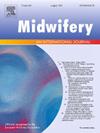瑞士德语区助产士同情疲劳的普遍性:一项定量横断面研究
IF 2.6
3区 医学
Q1 NURSING
引用次数: 0
摘要
问题报告指出,由于工作量大、创伤事件和其他压力情况,许多助产士患有同情疲劳(CF)。研究表明,CF经常导致助产士离开这个行业。它还会对他们提供富有同情心的护理的能力产生负面影响。目的本研究旨在确定瑞士德语区助产士CF的患病率,并探讨人口统计学和工作相关因素与CF之间的关系。方法横断面研究于2022年9月至12月进行,使用经验证的“职业生活质量”(ProQOL)问卷评估同情疲劳。在问卷中加入了相关的人口统计学和专业特征。采用描述性统计、双变量分析和广义加性模型(GAM)。在374名参与调查的助产士中,31.8% (n = 119)受到同情疲劳的影响。GAM模型显示,频繁接触创伤性事件对同情疲劳得分的影响最大(估计值:5.17)。偶尔参加创伤性分娩的影响较小(估计:4.16),其次是对工作相当/非常不满意(估计:3.31)和经历心理负担(估计:1.93)。对工作相当满意的助产士受影响最弱(估计:1.49)。CF的相关因素是多维的、多因素的。确定潜在的解决方案和预防措施可能很复杂。结论进一步研究对助产士同情疲劳的影响,并制定有效的预防措施是必要的。本文章由计算机程序翻译,如有差异,请以英文原文为准。
The prevalence of compassion fatigue among midwives in German-speaking Switzerland: A quantitative cross-sectional study
Problem
Reports indicate that many midwives suffer from compassion fatigue (CF) as a result of exposure to heavy workloads, traumatic events, and other stressful situations.
Background
Studies have shown that CF often drives midwives to leave the profession. It also negatively affects their ability to provide compassionate care.
Aim
The study aimed to determine the prevalence of CF among midwives in German-speaking Switzerland and to examine the associations between demographic and work-related factors with CF.
Methods
A cross-sectional study was conducted between September and December 2022, using the validated "Professional Quality of Life" (ProQOL) questionnaire to assess compassion fatigue. Relevant demographic and professional characteristics were added to the questionnaire. Descriptive statistics, bivariable analyses and the generalised additive model (GAM) were applied.
Findings
Of the 374 participating midwives, 31.8 % (n = 119) were affected by compassion fatigue. The GAM model indicated that frequent exposure to traumatic events had the strongest impact on compassion fatigue scores (estimate: 5.17). A smaller impact was observed for attending traumatic births occasionally (estimate: 4.16), followed by being rather/much dissatisfied with their job (estimate: 3.31) and experiencing psychological burden (estimate: 1.93). The weakest effect was found in midwives who were rather satisfied with their job (estimate: 1.49).
Discussion
Factors associated with CF are multidimensional and multifactorial. Identifying potential solutions and preventive measures can be complex.
Conclusion
Further research is essential to support midwives affected by compassion fatigue and to develop effective preventive measures.
求助全文
通过发布文献求助,成功后即可免费获取论文全文。
去求助
来源期刊

Midwifery
医学-护理
CiteScore
4.50
自引率
7.40%
发文量
221
审稿时长
13.4 weeks
期刊介绍:
Midwifery publishes the latest peer reviewed international research to inform the safety, quality, outcomes and experiences of pregnancy, birth and maternity care for childbearing women, their babies and families. The journal’s publications support midwives and maternity care providers to explore and develop their knowledge, skills and attitudes informed by best available evidence.
Midwifery provides an international, interdisciplinary forum for the publication, dissemination and discussion of advances in evidence, controversies and current research, and promotes continuing education through publication of systematic and other scholarly reviews and updates. Midwifery articles cover the cultural, clinical, psycho-social, sociological, epidemiological, education, managerial, workforce, organizational and technological areas of practice in preconception, maternal and infant care.
The journal welcomes the highest quality scholarly research that employs rigorous methodology. Midwifery is a leading international journal in midwifery and maternal health with a current impact factor of 1.861 (© Thomson Reuters Journal Citation Reports 2016) and employs a double-blind peer review process.
 求助内容:
求助内容: 应助结果提醒方式:
应助结果提醒方式:


